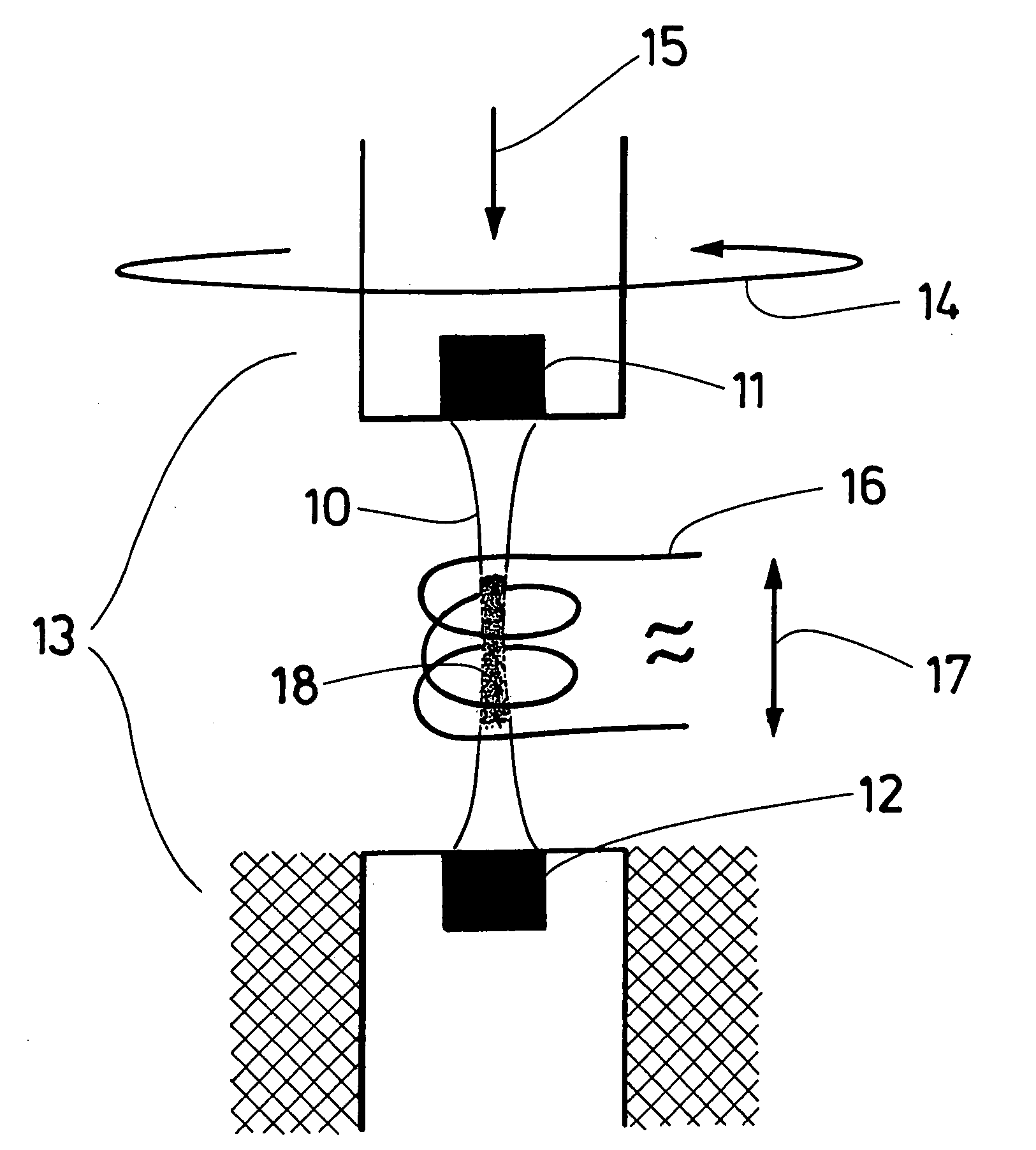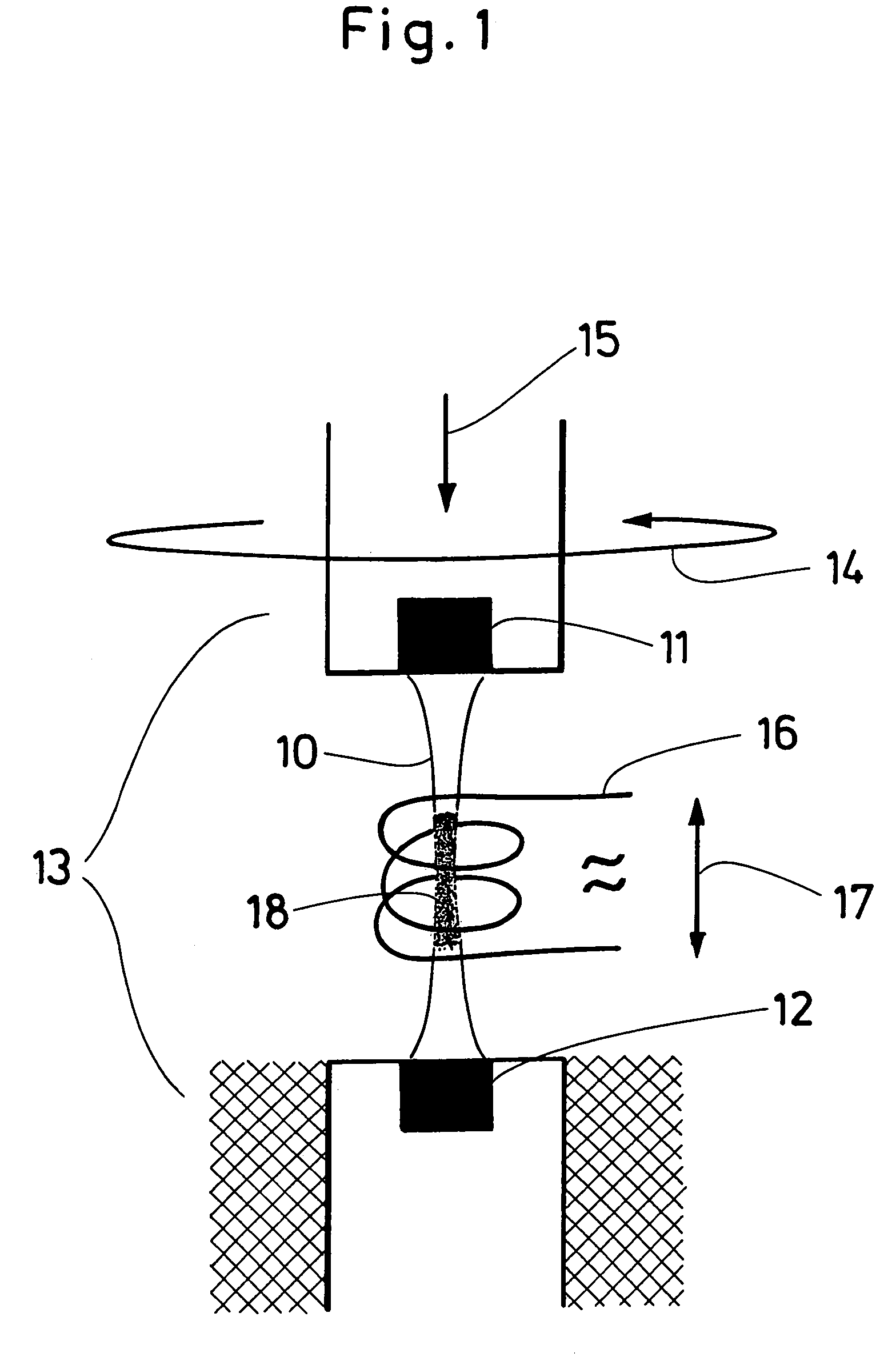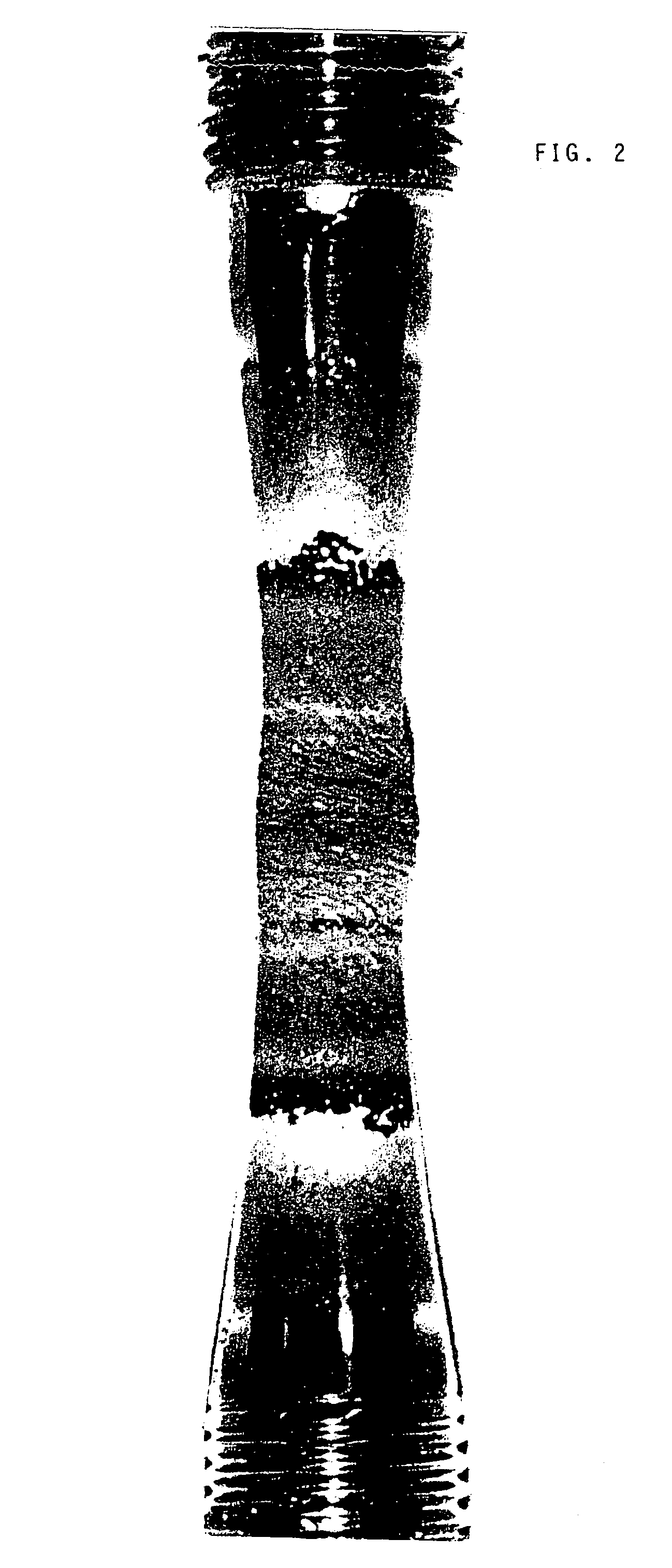Method for the treatment of metallic materials
a technology of metallic materials and treatment methods, applied in forging presses, manufacturing tools, forging press details, etc., can solve the problems of inability to tolerate certain technical applications, and inability to meet the requirements of certain technical applications, etc., and achieve the effect of enhancing the textur
- Summary
- Abstract
- Description
- Claims
- Application Information
AI Technical Summary
Benefits of technology
Problems solved by technology
Method used
Image
Examples
Embodiment Construction
[0025]The method described herein has been tested in the laboratory with a TiAl alloy of the composition (in atomic percent):
Ti-47 Al-3.7 (Nb, Cr, Mn, Si)-0.5 B
[0026]The experiments were performed in air. Samples with threaded end portions were installed in a compression apparatus in which the sample engagement structures could be rotated relative to each other for twisting of the sample (FIG. 1). The samples were heated by an induction coil to different transformation temperatures between 1000° C. and 1100° C. the sample temperature was determined by a thermoelement. Because of the geometric design of the induction coil the hot sample zone had a length of about 6 mm, which was considered the effective sample length for the evaluation of the test.
[0027]After reaching the desired temperature, first a constant compression force of 10 to 50 Mpa was applied to the samples. During this step, no deformation occurred because of the very coarse casting texture. Then the samples were twisted...
PUM
| Property | Measurement | Unit |
|---|---|---|
| temperature | aaaaa | aaaaa |
| temperatures | aaaaa | aaaaa |
| temperature | aaaaa | aaaaa |
Abstract
Description
Claims
Application Information
 Login to View More
Login to View More - R&D
- Intellectual Property
- Life Sciences
- Materials
- Tech Scout
- Unparalleled Data Quality
- Higher Quality Content
- 60% Fewer Hallucinations
Browse by: Latest US Patents, China's latest patents, Technical Efficacy Thesaurus, Application Domain, Technology Topic, Popular Technical Reports.
© 2025 PatSnap. All rights reserved.Legal|Privacy policy|Modern Slavery Act Transparency Statement|Sitemap|About US| Contact US: help@patsnap.com



